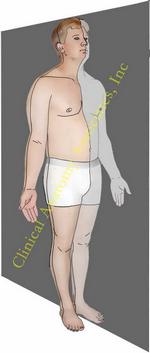
Medical Terminology Daily (MTD) is a blog sponsored by Clinical Anatomy Associates, Inc. as a service to the medical community. We post anatomical, medical or surgical terms, their meaning and usage, as well as biographical notes on anatomists, surgeons, and researchers through the ages. Be warned that some of the images used depict human anatomical specimens.
You are welcome to submit questions and suggestions using our "Contact Us" form. The information on this blog follows the terms on our "Privacy and Security Statement" and cannot be construed as medical guidance or instructions for treatment.
We have 790 guests online

Georg Eduard Von Rindfleisch
(1836 – 1908)
German pathologist and histologist of Bavarian nobility ancestry. Rindfleisch studied medicine in Würzburg, Berlin, and Heidelberg, earning his MD in 1859 with the thesis “De Vasorum Genesi” (on the generation of vessels) under the tutelage of Rudolf Virchow (1821 - 1902). He then continued as a assistant to Virchow in a newly founded institute in Berlin. He then moved to Breslau in 1861 as an assistant to Rudolf Heidenhain (1834–1897), becoming a professor of pathological anatomy. In 1865 he became full professor in Bonn and in 1874 in Würzburg, where a new pathological institute was built according to his design (completed in 1878), where he worked until his retirement in 1906.
He was the first to describe the inflammatory background of multiple sclerosis in 1863, when he noted that demyelinated lesions have in their center small vessels that are surrounded by a leukocyte inflammatory infiltrate.
After extensive investigations, he suspected an infectious origin of tuberculosis - even before Robert Koch's detection of the tuberculosis bacillus in 1892. Rindfleisch 's special achievement is the description of the morphologically conspicuous macrophages in typhoid inflammation. His distinction between myocardial infarction and myocarditis in 1890 is also of lasting importance.
Associated eponyms
"Rindfleisch's folds": Usually a single semilunar fold of the serous surface of the pericardium around the origin of the aorta. Also known as the plica semilunaris aortæ.
"Rindfleisch's cells": Historical (and obsolete) name for eosinophilic leukocytes.
Personal note: G. Rindfleisch’s book “Traité D' Histologie Pathologique” 2nd edition (1873) is now part of my library. This book was translated from German to French by Dr. Frédéric Gross (1844-1927) , Associate Professor of the Medicine Faculty in Nancy, France. The book is dedicated to Dr. Theodore Billroth (1829-1894), an important surgeon whose pioneering work on subtotal gastrectomies paved the way for today’s robotic bariatric surgery. Dr. Miranda.
Sources:
1. "Stedmans Medical Eponyms" Forbis, P.; Bartolucci, SL; 1998 Williams and Wilkins
2. "Rindfleisch, Georg Eduard von (bayerischer Adel?)" Deutsche Biographie
3. "The pathology of multiple sclerosis and its evolution" Lassmann H. (1999) Philos Trans R Soc Lond B Biol Sci. 354 (1390): 1635–40.
4. “Traité D' Histologie Pathologique” G.E.
Rindfleisch 2nd Ed (1873) Ballieres et Fils. Paris, Translated by F Gross
"Clinical Anatomy Associates, Inc., and the contributors of "Medical Terminology Daily" wish to thank all individuals who donate their bodies and tissues for the advancement of education and research”.
Click here for more information
- Details

The definition of a geometrical plane is "a surface defined by a minimum of three points". By definition, a plane is imaginary. The [median plane] is "a vertical plane that divides the human body standing in the anatomical position in two halves, left and right, that are equal in size" (although not in content).
The term "midline" is a bit of a misnomer, as this is a plane and not a line, although if you look at the median plane from the anterior or posterior aspect of an individual in the anatomical position, you would have a line, ergo, midline!
To visualize the above statement, click on this "anatomical position" link and hover your mouse over the image. The midline will appear.
Another term that can be used synonymously with [midline] or [median plane] is that of "midsagittal plane". Any plane that is parallel to the midsagittal plane (therefore not on the median plane) can be called either "sagittal" or "parasagittal".
Since planes are imaginary, the only way to make them real is to cut, section, or image following a plane, this is called a "plane of section"
Image property of: CAA.Inc. Artist: Victoria G. Ratcliffe
- Details
This article is part of the series "A Moment in History" where we honor those who have contributed to the growth of medical knowledge in the areas of anatomy, medicine, surgery, and medical research.

Antonio Scarpa
Antonio Scarpa (1752-1832). An Italian physician and anatomist, Antonio Scarpa is probably most remembered by the many human anatomy eponymic structures named after him, like "Scarpa's Fascia". Arising from humble origins, a very young Scarpa started medical studies at the University of Padua and obtained his doctorate at 18 years of age.
In 1772 he published a detailed anatomical study of the middle and internal ear, and later continued with animal comparative studies, surgical studies, and discoveries such as the innervation of the heart, and introduced the concept of arteriosclerosis. He left behind a solid group of books and publications
Known for his aggressive personality, Scarpa is said to have had more enemies than friends. After his death, his head was preserved and is still on display today at the History Museum of the University of Pavia, in Italy. Click here for a YouTube video depicting Scarpa's life and his head on display (Italian)
Antonio Scarpa was one of the first to describe the cochlea, one of the components of the inner ear
Originall image courtesy of Maurir, Public domain, via Wikimedia Common
- Details
The suffix [-(o)lithiasis] is a compound suffix with the Greek root [-lith-] meaning "stone" and the suffix [-iasis] meaning "condition, pathology, or disease". [-(o)lithiasis] then means the "condition or presence of stones".
This suffix can be found in many medical terms such as:
- Choledocolithiasis: a condition of stones in the bile duct
- Nephrolithiasis: Kidney stones
- Cholelithiasis: Gall or bile stones. This term does not indicate specific stone location
- Cholecystolithiasis: Stones in the gallbladder
- Cystolithiasis: Bladder stones
- Choledocholithiasis: Stones in the common bile duct
Can you find the meaning of the word dacryocystolithiasis?
- Details
The sternum is a median bone that, with the anterior portion of the ribs, forms the anterior boundary of the bony thorax.
The term [sternum] comes from the Greek, meaning "flat chest or flat surface". In early anatomy, the sternum was known by a Latin term [gladius] referring to the similarity of the sternum to the short sword of the gladiators.
The sternum is composed by three segments, from superior to inferior they are the:
- Manubrium: This is Latin for "handle" (of the sword)
- Body: This segment is formed by four separate bones that fuse together later in life. Each separate bony component of the sternal body is known as a "sternabra" (plural: sternabrae)
- Xiphoid appendix: The term [xiphoid] is Greek and means "similar to a straight sword", but it refers only to the lowest portion of the sternum. Sometimes called the [xiphisternum], the xiphoid appendage or process is cartilaginous and is the last cartilage to ossify in the human.
The boundary between the manubrium and sternal body is known as the "sternal angle" or the "angle of Louis" named after Antoine Louis, a French physician. Click on the image of the thorax to see a detailed image of the sternum.
Images property of: CAA.Inc.. Artist: David M. Klein
- Details
This article is part of the series "A Moment in History" where we honor those who have contributed to the growth of medical knowledge in the areas of anatomy, medicine, surgery, and medical research.

Henri Fruchaud
Dr. Henri Rene Fruchaud (1894-1960) was born in 1894 in Angers, the capital of the French province of Anjou. He started his medical studies in Anjou and continued them later in Paris. He was active in both WWI and WWII, earning several medals for bravery. He published a large number of articles in diverse surgical fields.
An anatomist and a surgeon, Fruchaud is best known for his work in the field of Hernia Surgery by two of his books published in 1956: "L'Anatomie chirurgicale de la r?gion de l'aine" (Surgical anatomy of the groin region), and "Le traitement chirurgical des hernies de l'aine" (Surgical Treatment of Groin Hernias). He described the presence of a weak area in the pelvic region that he calls the "Myopectineal Orifice" or MPO. He states in his book: "It may be said that a healthy man is, unknown to himself, a hernia bearer". The MPO concept has become of importance after the advent of the laparoscopic repair of inguinofemoral hernias.
He is one of the members of the French Order of the Liberation, where you can read his biography in French.
Original imageof Dr. Henri Fruchaud courtesy of theFrench Order of the Liberation Museum.
Source: "Henri Fruchaud (1894–1960): A man of bravery, an anatomist a surgeon" Stoppa,R and Wantz,G. Hernia 1998,Vol 2,(1) 45 - 47
- Details
The word [interstice] is a derivation of the Latin term [interstitium] meaning "interval" or "spaces between". The plural form is [interstices]. The terms is used in anatomy to denote small spaces within a structure. As an example, bone marrow and venous sinuses are found in the [interstices] of the cancellous bone in the body of a vertebra.
The term is also used to describe different pathologies such as insterstitial cystitis and instertitial lung disease.
Word suggested by:Sara Mueller


